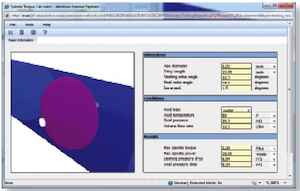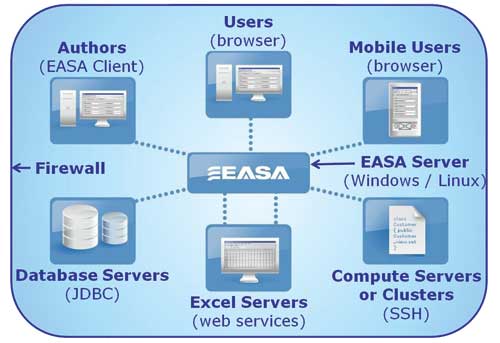Deploying Your Engineering Applications Over a Private Cloud
EASA brings the benefits of cloud computing to almost any application, while avoiding the logistical and security concerns of a public cloud.
Latest News
June 1, 2011
By Seb Dewhurst
Editor’s Note: This is sponsored content.
 Frequently used Excel ® spreadsheets, MATLAB ® models, in-house codes, and CAE models can be exposed as web applications. Users need only a browser. |
The “Cloud” usually refers to a “public” or “external” cloud, accessed over the Internet, with an off-site provider. The possibilities for engineers are truly exciting, but there are some questions which we need to consider:
- Are the engineering applications which I use even available in the cloud?
- Is it acceptable to run critical engineering models (my company’s intellectual property) in a public cloud?
- What do we do if the service fails, as Amazon Web Services did during April 2011?
Organizations frequently opt to avoid these issues by using private (or “internal”) clouds, while still achieving many of the benefits of cloud computing.
EASA—an Easy Path to a private Engineering Cloud
Once installed on a server on your network, EASA becomes an internal cloud which hosts the applications and models your engineers and scientists use most frequently. Model “owners” use EASA to author and publish web applications that link to existing engineering models. No coding is required.

End-users need only a desktop or a mobile device with a browser. They do not need the underlying software installed locally. The EASA server not only hosts your web applications, but also provides a central repository of results, enabling users to collaborate when they need to.
About Us EASA is in use at companies such as Canon, Corning, Hewlett-Packard, General Electric, Procter & Gamble, and Xerox.
|
EASA may also be used to integrate multiple engineering tools under one web application, making a process more seamless for users.
Spreadsheets on the cloud
Excel ® may be the most commonly used engineering application. It is used to optimize operations, for preliminary design, engineering calculations, and for pricing and proposal generation. EASA enables you to transform spreadsheets into web applications suitable for multiple users, eliminating many issues which plague conventional spreadsheet usage:
- Version control is assured.
- Users can save their work to a central repository.
- Intellectual Property is protected; users cannot see inside the “master” spreadsheet.
Seb Dewhurst is director of business development, EASA, Inc. To view case studies and videos, or to download EASA, visit easasoftware.com.
Subscribe to our FREE magazine, FREE email newsletters or both!
Latest News
About the Author
DE’s editors contribute news and new product announcements to Digital Engineering.
Press releases may be sent to them via [email protected].







